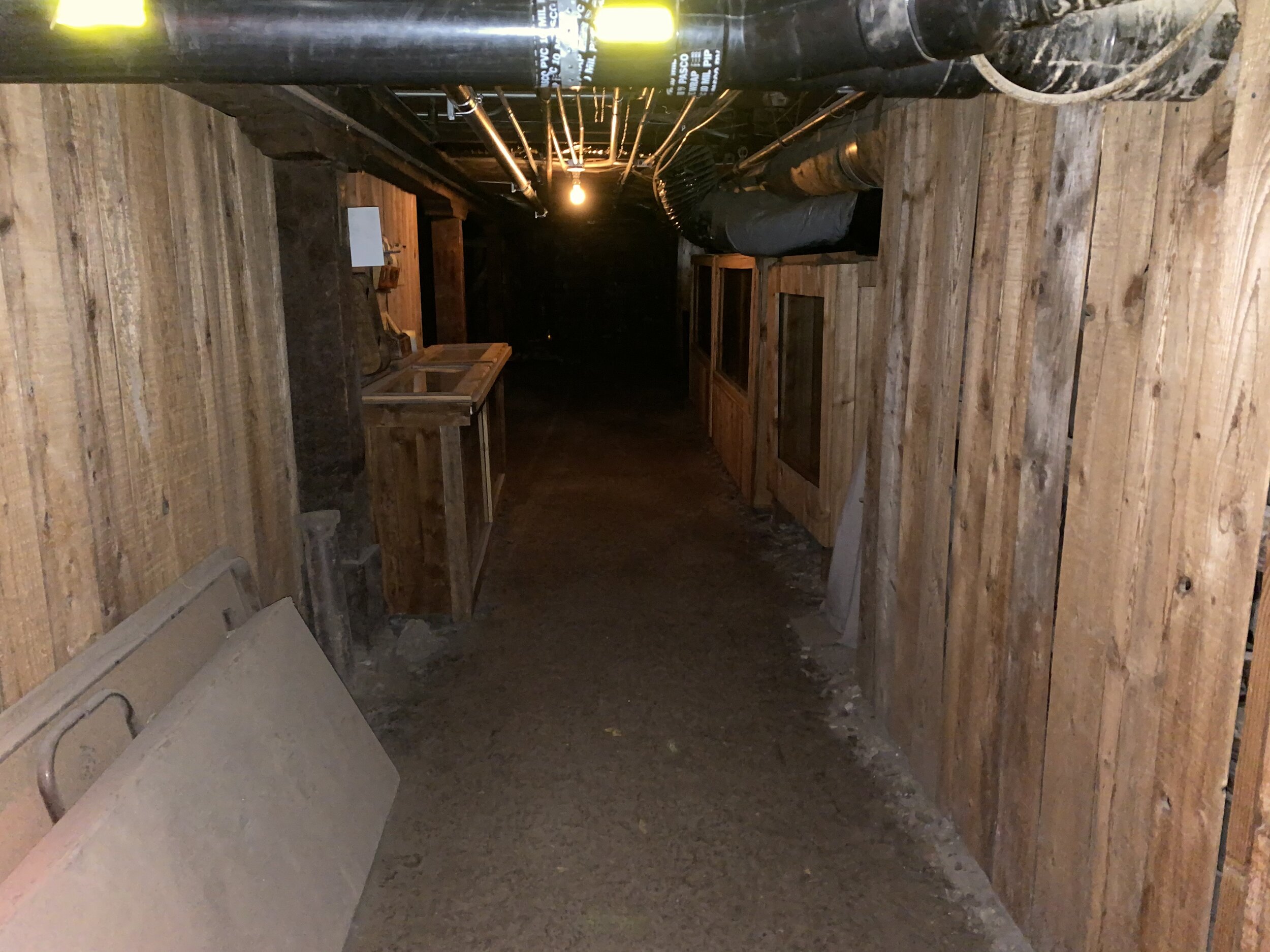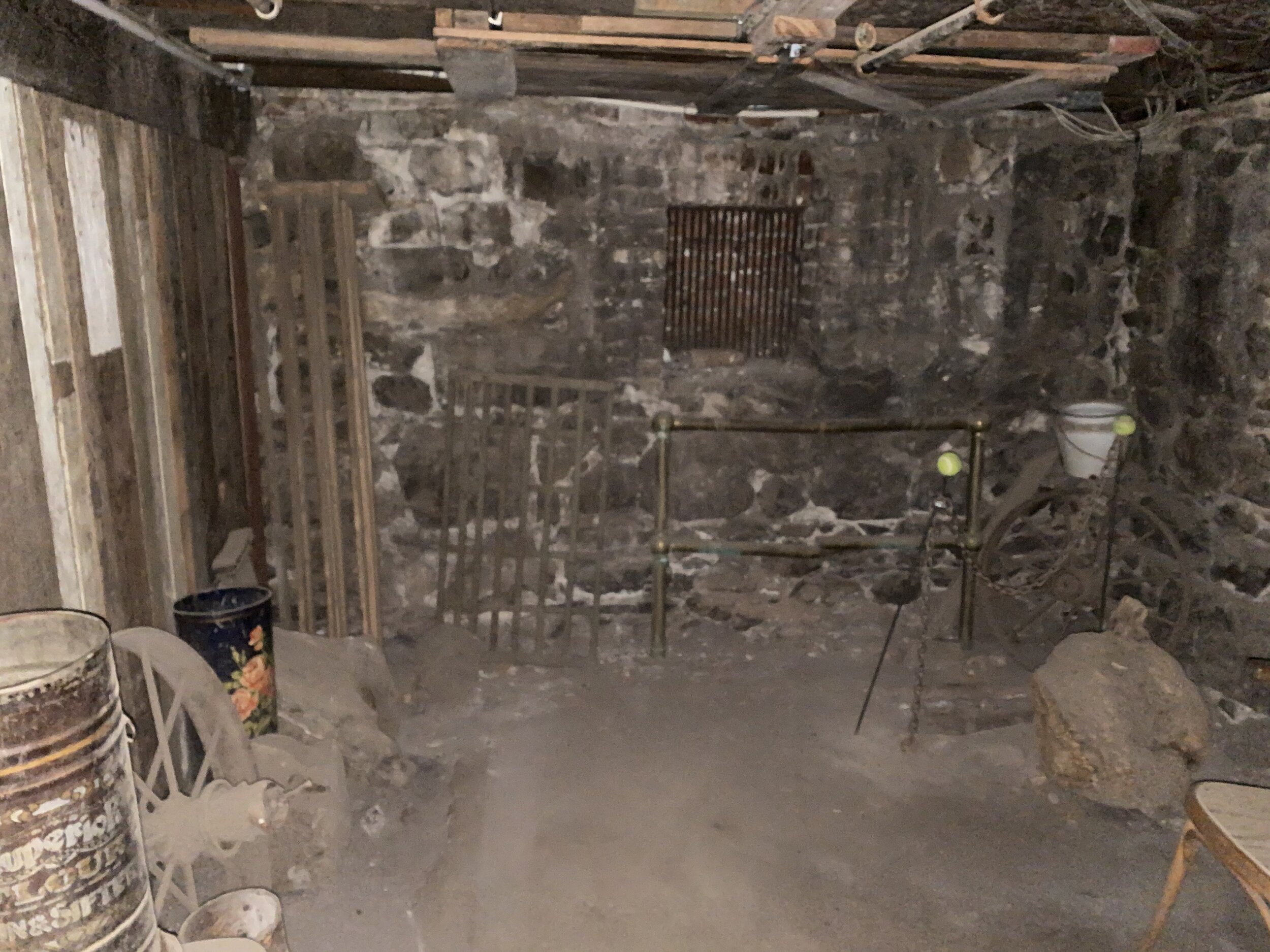Descending into Portland’s “Shanghai Tunnels”
By Graham O’Neill ‘20
Starting in the 1870s, Portland and surrounding areas became infamous for a practice called “crimping.” Crimping, commonly known as “shanghaiing” was the act of kidnapping (often through drugging) and selling people to ship captains, men as free labor and women as prostitutes. This supposedly was done largely through Portland’s so-called “Shanghai Tunnels,” a system of tunnels under Portland (which are now mostly filled with dirt). In the prime of crimping along the Willamette River, bars and restaurants in the Chinatown area were riddled with trap doors leading into the tunnels, facilitating the seamless disappearance of a drunken bar goer.
There is a debate throughout Portland about whether shanghaiing really took place in the Portland underground. One of the most prominent figures associated with the Shanghai Tunnels is Michael Jones, who founded the Cascade Geographic Society in 1979, and has since devoted his time to uncovering Portland’s dark past and advocating for those whose families have been affected by shanghaiing. Not only does Jones educate about shanghaiing, but he is also devoted to exploring and discovering new pieces of underground which he believes to have been used by the crimps.
As a child, Jones was very inquisitive and curious. He had a foster brother who would often visit Portland and stay in hotels in Chinatown. One day in the 1970s when Jones was seven, he went to visit his brother in one of these hotels. While alone in the lobby, being the inquisitive person he is, Jones started asking random people question after question about the hotel and its history. Once his chatter had cleared out the entire lobby, one man remained who Jones describes as an old grouch. The old grouch looked at him and offered to show him something that he could explore. The old man led Jones to a construction site, where there was an entrance to the underground. The man handed Jones a box of matches in order to see and showed him the way into the tunnel. Over time, Jones’ interest in these tunnels increased and he devoted himself to digging them up and discovering the history.
Currently, Jones and his organization lead tours of the Shanghai Tunnels, which begin with that story. While Jones was not available for an interview, their tour provides an in-depth lesson on what Jones claimed to have occurred in the tunnels.
“Most things you see here were either found in the tunnels or rebuilt from materials found in the tunnels,” said the tour guide as the group flooded into the dark.
The most compelling artifact on this tour is front and center in the first portion of underground: a cheaply built opium den, complete with wooden bunks which were rented out by opium users.
“The bottom bunk was the most expensive, mostly because after smoking opium for whatever amount of time, you would need to maneuver off of the bunk, or in some cases fall,” said our tour guide.
She signaled towards a series of cans strung together.
“Most of the underground was run by the Chinese gangs. Police and shanghaiers were intruders,” she said. “These cans would make noise when someone came in that portion of the underground, serving as an alarm. Police officer Al Zorado, who worked closely with Michael [Jones], recalled multiple raids on the underground. He stated that they thought the cans were booby traps. They served a double purpose.”
The final evidence given to us was a series of shockingly small wooden cages, cornered with logs for strong reinforcement.
“This is where the women were kept,” the tour guide explained. “While men were used for labor, women were kept in Portland for prostitution. The purpose of these cages was to fully isolate the woman until her spirit was broken.”
She then told us about an anonymous ex-crimp who Jones allegedly interviewed who seemed to have no remorse about his former occupation. The tour guide repeated this man’s feelings about his former occupation.
“‘I was good at it and I made a lot of money doing it. Most people would have taken two days or so. I was the best. With me, it was four hours tops,’” he supposedly said.
Jones’ tour provided an incredibly detailed explanation of what they believe to have happened in the tunnels. Although the information was backed up by certain artifacts, the Oregon Historical Society’s Digital History Manager, Amy Platt, said that there isn’t enough evidence in the form of primary sources to verify that shanghaiing did indeed occur in the Portland underground.
“I can’t find [evidence]. I just can’t see a reason to believe it,” Platt said.
Not only does Platt feel there is no convincing evidence, but she provides evidence against the existence of shanghaiing in the tunnels.
“There was no harbor wall at the time, which was not built until 1929. Portland had a flood period which was at least half the year, which would likely lead the tunnels to flood, completely defeating their use,” Platt explained.
The tour guide also acknowledged the flood season, saying that “the tunnels were only unusable for a short portion of that time.”
“They were not exactly concerned about the prisoners being cold and wet,” said the tour guide.
Platt described her view of the true purpose of the tunnels based on newspaper and first-person accounts.
“It was a series of basements connected by passages which were often used by gambling houses… They were also used for wine cellars, and to keep equipment out of the rain,” said Platt.
The Oregon Historical Society actually published an article by Denise M. Alborn in a 1992 Oregon Historical Quarterly which states that the tunnels were used for crimping. In “Crimping and Shanghaiing on the Columbia River,” Alborn includes excerpts from Joseph “Bunco” Kelly’s diaries, who was a famous crimper in Portland.
Platt denies that the information in the article is indeed historically accurate.
“They did not get their primary sources in [the writing of the article]. I am pretty sure they just got most of that information from Michael Jones,” said Platt.
A review of the article’s 62 footnotes does include one reference to Michael Jones.
Due to the lack of primary sources, Platt labels Jones’ Shanghai Tunnel tours as “a smart marketing scheme.”
More questions remain as to the existence of the Shanghai Tunnels. How did Jones get such detailed stories and accounts about the tunnels? Will Jones ever release the “indisputable evidence” which he claims to have?
The truth of the Shanghai Tunnels remains buried in masses of dirt waiting to be dug up under Chinatown.



